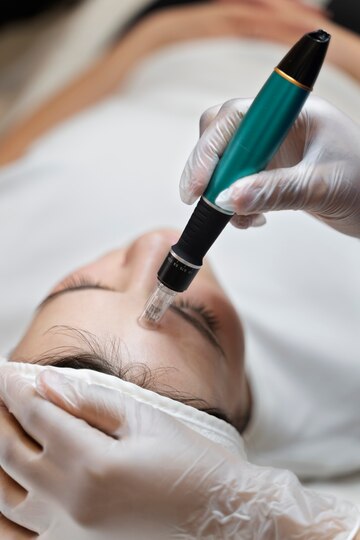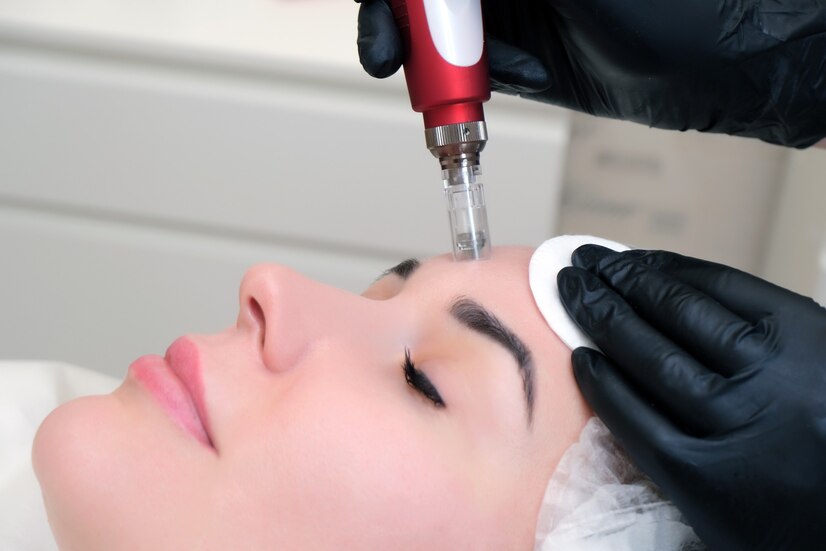About - Microneedling
Microneedling is a minimally invasive skin procedure that uses tiny, sterile needles to
create micro-injuries in the skin. This stimulates the body’s natural healing
process, boosting collagen and elastin production to improve skin texture,
tone, and overall appearance. This process helps reduce fine lines, wrinkles,
acne scars, and hyperpigmentation, resulting in smoother, more radiant skin.
How it Works
Procedure Details
Consultation & Cleansing – The skin is evaluated, cleaned, and numbed using a topical anesthetic.
Microneedling Device Application – A pen-like device with sterile needles is gently moved across the skin.
Post-Treatment Serums – Growth factors or soothing serums are applied to enhance healing and results.
Post-Treatment Serums – Growth factors or soothing serums are applied to enhance healing and results.
book nowBenefits
- Boosts natural collagen and elastin production
- Improves skin texture and firmness
- Reduces scars, fine lines, and hyperpigmentation
- Minimally invasive with short recovery
Potential Risks
- Temporary redness, dryness, or swelling
- Minor bleeding or bruising (rare)
- Infection if post-care is not followed
- Not suitable for those with active acne or skin infections




Who Should Get Microneedling?
Microneedling is ideal for:
- Individuals with acne scars or post-inflammatory marks
- ·Those with dull, aging, or sagging skin
- People looking for a non-surgical collagen boost
- Anyone wanting smoother, more even skin tone
Not recommended for people with active acne, rosacea, eczema, or certain skin infections. Pregnant or breastfeeding individuals should consult their dermatologist.
FAQs
Whatis Microneedling?
Microneedling (also known as collagen induction therapy) involves using a device with fine needles to create controlled micro-injuries in the skin, encouraging collagen production and skin renewal.
What skin concerns does Microneedling treat?
It’s effective for acne scars, fine lines, enlarged pores, uneven texture, stretch marks, and overall skin rejuvenation.
Does it hurt?
A numbing cream is applied before the procedure to minimize discomfort. Most patients report mild pressure or a prickling sensation.
How long is the recovery time?
You may experience redness or mild swelling for 1–3 days. Full skin recovery usually takes less than a week.
How many sessions are needed?
For best results, 3 to 6 sessions spaced about 4 weeks apart are recommended, depending on the skin concern being treated.


